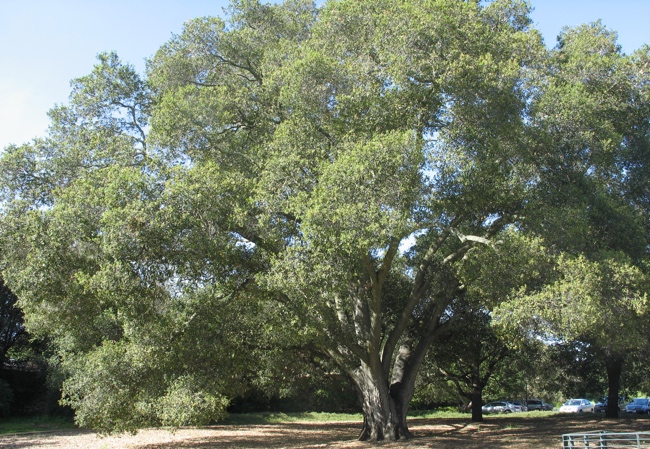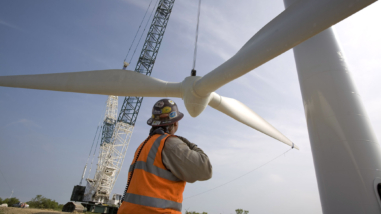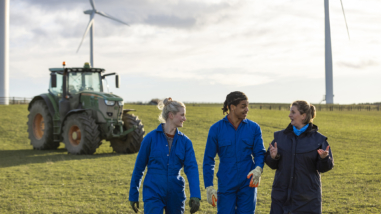Think globally, trees locally: one of the oaks at the Hewlett Foundation’s offices in Menlo Park, California (Photo Credit: The Hewlett Foundation)
Forty-five years ago this week, the first Earth Day was celebrated, during a time when people were just starting to wake up to the environmental hazards that we, as a society, had created and put up with for so long—air pollution, toxic waste, oil spills, raw sewage in our rivers. That first Earth Day started a national conversation about these hazards that morphed into a movement. It’s no coincidence that the Clean Air Act, the Clean Water Act, and the Endangered Species Act all became law around that time, and the U.S. Environmental Protection Agency was created. Forty-five years later, our air is clearer and our water cleaner, but the work is not done. We still need to stand up for the environment wherever it is threatened, and reflect on how we can be better stewards of this planet and the vast resources it provides.
In honor of Earth Day, the Hewlett Foundation is celebrating our very first Earth Week—there were just too many inspiring ideas to pack into one day. Bea Johnson, author of Zero Waste Home, spoke to our staff about her family’s radical sustainability (the total amount of landfill-bound trash they produce in a year fits in a quart jar); staff are scheduled to tour the innovative Recology facilities in San Francisco; a panel of Hewlett Foundation community gardening enthusiasts will share tips about growing food in our particular Menlo Park microclimate; experts from a local sports store will provide a lesson about bike safety; and we’ll gather to celebrate Earth Day itself in the California sunshine—though we’d be happy enough if we got rained out. To top it all off, staff are making individual pledges to cut at least one environmentally un-friendly habit. I’m so grateful for our staff’s embrace of sustainability in our own work and lives, and for the chance to be the sustainability coordinator for an organization with such a long historical commitment to protecting our environment.
That commitment to environmental conservation has been a hallmark of the Hewlett Foundation since our founding, from our longstanding support for the protection of Western lands to our ongoing large-scale efforts to head off the worst effects of climate change. Our commitment to the environment is also reflected in the sustainability principles and practices that we employ in the Foundation’s day-to-day operations. When it was completed in 2002, the Foundation’s building was the first LEED-certified Gold Building in California, and we strive to ensure that the choices we make, from the office supplies we purchase to the types of lightbulbs we install, account for the environmental costs and benefits associated with them.
We believe that the resources we have at our disposal place on us the responsibility to do more than meet current standards for sustainability. Our resources give us the opportunity to push the boundaries of what’s possible—to test new ideas and take risks, much as we do in our grantmaking. When the Foundation’s current office was built a dozen years ago, for example, the premium we paid to make it a green building was nearly 30 percent above the cost of standard construction. Not all of the innovations that went into that construction have provided the returns we hoped for, but many have, and our experience helped push the field of green building forward. Today, a similar level of sustainable building practices would entail only a three or four percent premium over standard techniques and materials.
By understanding the impact that we, as an organization and as individuals, are having on our planet’s natural resources, we can better understand where we still need to improve, and make sure our internal operations live up to our environmental values. By combining the philosophy of our founders with the commitment of our current staff, we want the Foundation to be leaders in sustainability and a model for other organizations like us. For us, sustainability is not as an outcome, but an integral part of the Foundation culture we are trying to build each day.




